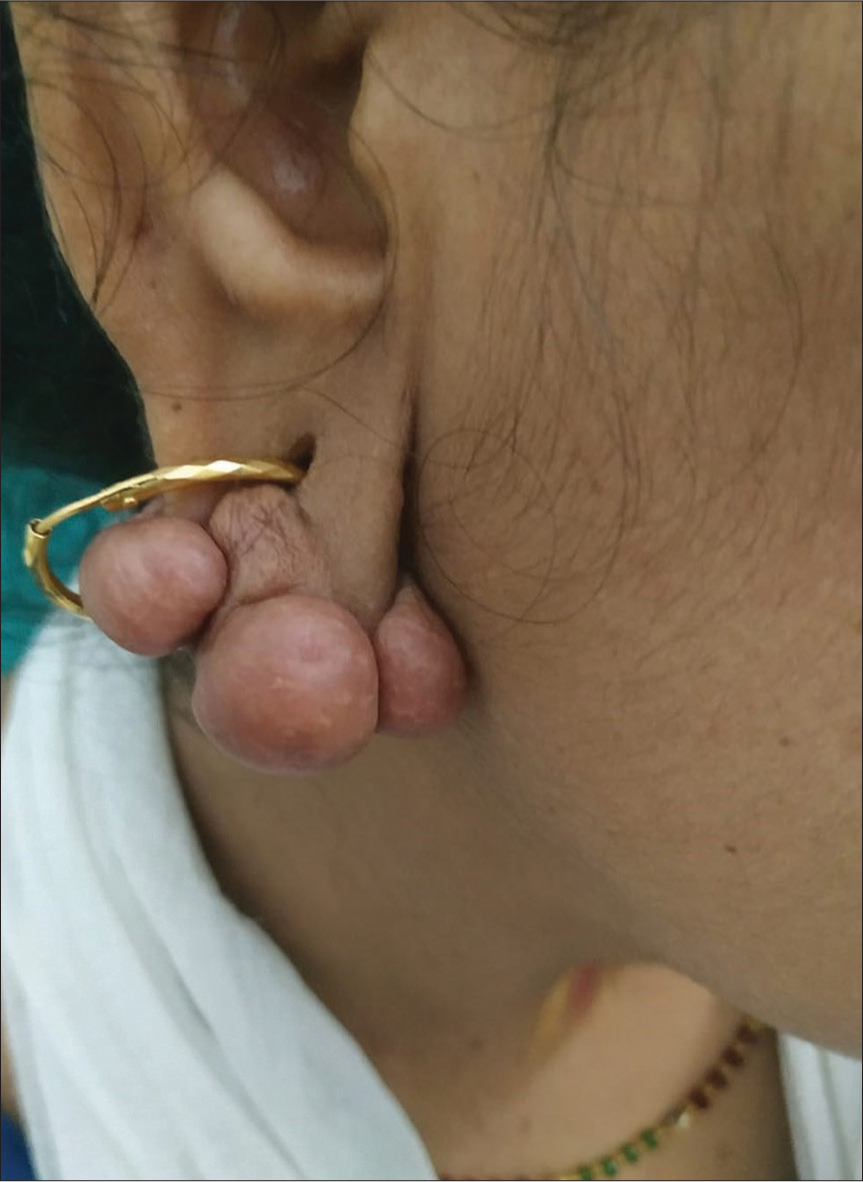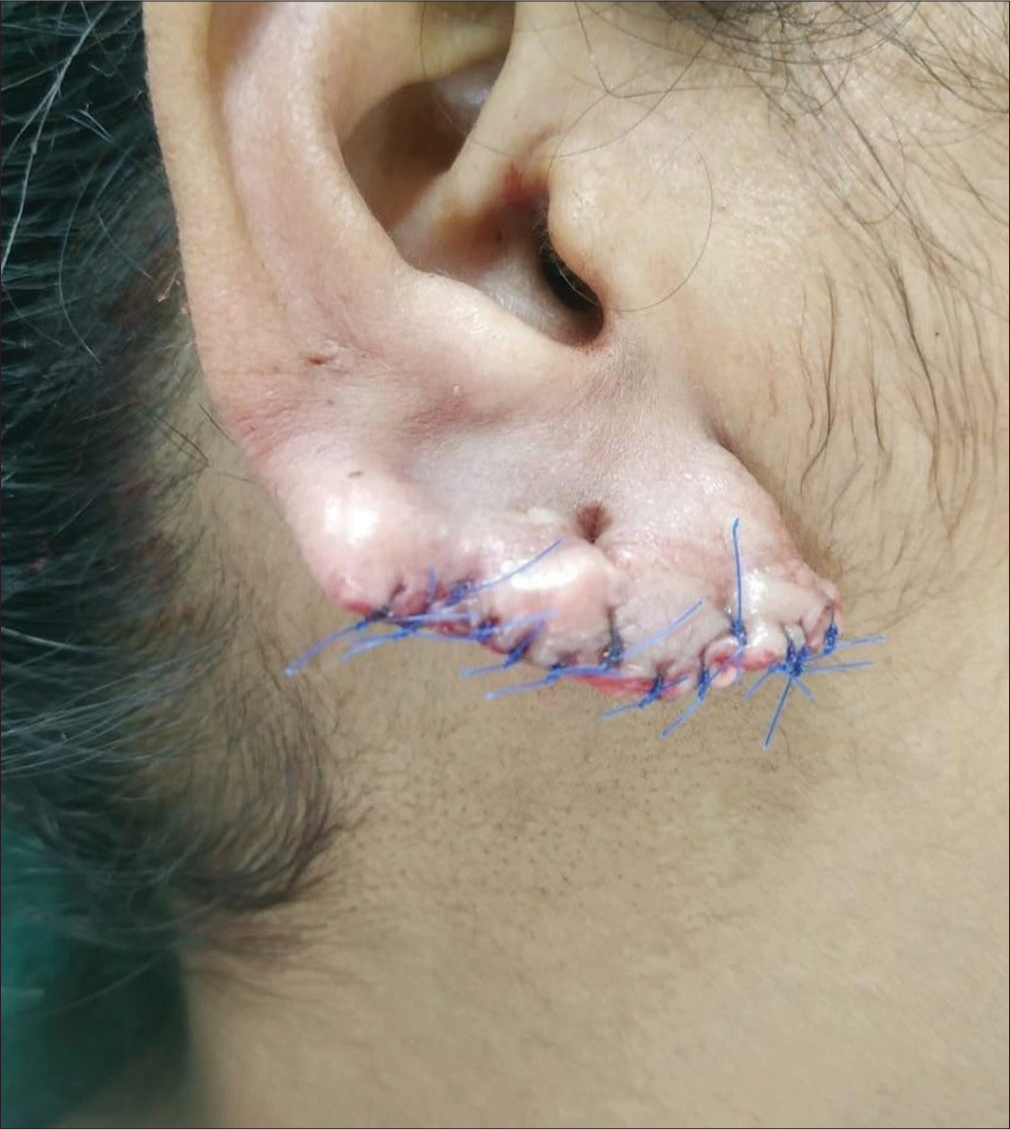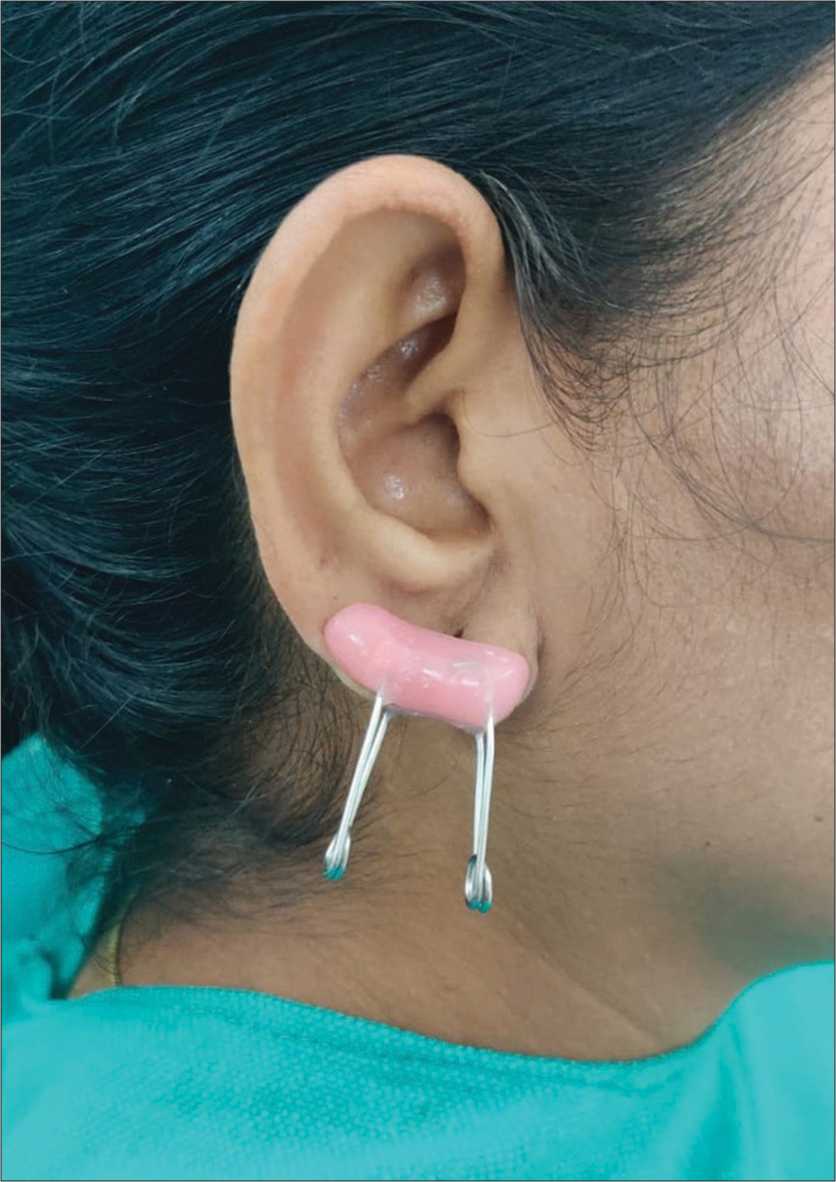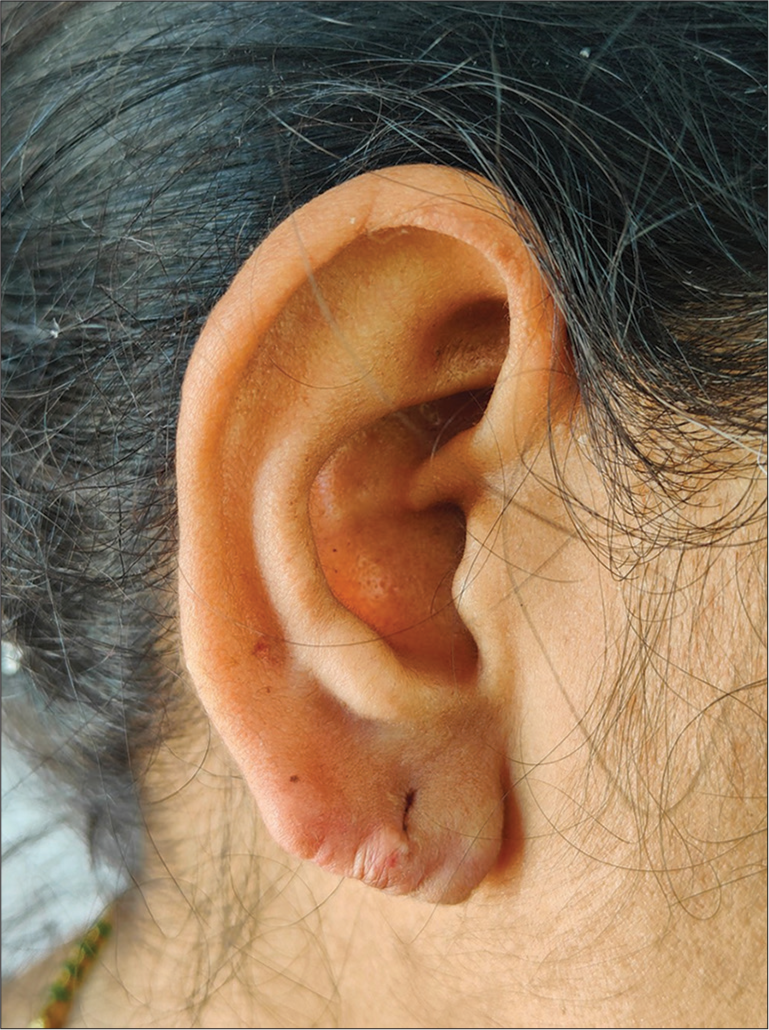Translate this page into:
Custom-made dental prosthetic clip for postoperative management of earlobe keloids
*Corresponding author: Vikas Pathania, 180 Military Hospital, Missamari, Sonitpur, Assam 784506, India. vikascongo@gmail.com
-
Received: ,
Accepted: ,
How to cite this article: Pathania V, Udayasankar R. Custom-made dental prosthetic clip for postoperative management of earlobe keloids. J Cutan Aesthet Surg. 2025;18:133-5. doi: 10.4103/JCAS.JCAS_16_23
Abstract
Earlobe keloids are a common condition with varied and cross-specialty presentation. The condition is often recalcitrant and difficult to treat on account of its location. Frequent recurrences following excision is often frustrating for the patient and the surgeon. Application of pressure along with intra operative and postoperative intralesional steroids is a popular choice and is in vogue by surgeons and dermatologists. However, considering the uniqueness of the structure for every individual, it is often difficult to ensure one size fits all when using pressure therapy as an adjunct. We designed a simple polymethyl methacrylate (PMMA) dental prosthesis to ensure comfortable yet effective constant pressure over the lesion to ensure complete aesthetic outcome without recurrence in an operated earlobe keloid.
Keywords
Dental prosthesis
Earlobe keloid
Polymethyl methacrylate (PMMA)
PROBLEM STATEMENT
The use of spring based pressure clips as an effective way of delivering constant pressure post-earlobe excision was first described by Brent in 1978.1 Since then a number of innovations such as 3D printing, different contraptions and dental prosthetic material have been tried with variable results.2-4 Polymethyl methacrylate (PMMA) gained popularity for various dental applications due to its unique properties, including its low density, aesthetics, cost-effectiveness, ease of manipulation, and tailorable physical and mechanical properties. Due to its properties of ease of processing, acceptable mechanical properties, aesthetics, cost-effectiveness, and relatively lower toxicity, PMMA has replaced previously used denture base materials. Typifying the problem statement, a 36-year-old female patient presented with a progressively increasing unsightly earlobe keloid following ear piercing a year back to our dermatology outpatient department [Figure 1].

- Earlobe keloid.
RECOMMENDED SOLUTION
The keloid was excised under local anesthesia using radiofrequency cautery and the wound was sutured with 3/0 prolene with plan for postoperative multiple sessions of intralesional steroids monthly for 3 months [Figures 2 and 3].

- Excised keloid tissue.

- Sutured earlobe defect.
The patient was referred to a prosthodontist where a cast impression was taken, and a spring-based PMMA pressure clip was designed for use daily overnight by the patient. The patient was followed up monthly for adjusting the pressure [Figure 4]. The aesthetic outcome after 3 months was remarkable with complete resolution of the lesion without recurrence, which was maintained even after discontinuation of the pressure clip after 6 months [Figure 5]. The advantage of custom built prosthetic clips include ensuring constant yet variable pressure, custom fitting and aesthetic advantage over commercially available options.5

- Polymethyl methacrylate (PMMA) prosthetic clip in place.

- Complete resolution without recurrence of earlobe keloid after 6 months.
Limitation
The device being custom-made requires multiple sessions for fabrication and adjustment of pressure as also the facility for designing dental prosthesis.
Conclusion
The innovation highlights the use of a common dental prosthesis as pressure therapy for management of postoperative earlobe keloid.
Authors’ Contributions
Vikas Pathania: Concepts, design, definition of intellectual content, literature search, clinical studies, data acquisition, manuscript preparation, manuscript editing, manuscript review, guarantor. Rahul Udayasankar: Concepts, design, literature search, data acquisition, manuscript preparation, manuscript editing, manuscript review.
Ethical approval
Institutional Review Board approval is not required.
Declaration of patient consent
The authors certify that they have obtained all appropriate patient consent.
Conflicts of interest
There are no conflicts of interest.
Use of artificial intelligence (AI)-assisted technology for manuscript preparation
The authors confirm that there was no use of artificial intelligence (AI)-assisted technology for assisting in the writing or editing of the manuscript and no images were manipulated using AI.
Financial support and sponsorship: Nil.
References
- The role of pressure therapy in management of earlobe keloids: Preliminary report of a controlled study. Ann Plast Surg. 1978;1:579-81.
- [CrossRef] [PubMed] [Google Scholar]
- 3d printed custom made pressure clips for ear keloid treatment after surgical excision. Am J Otolaryngol. 2020;41:102516.
- [CrossRef] [PubMed] [Google Scholar]
- A U-loop pressure clip for earlobe keloid. J Prosthet Dent. 2004;92:389-91.
- [CrossRef] [PubMed] [Google Scholar]
- Modification of clip-on earring as pressure earring. J Am Acad Dermatol 2021:S0190-9622-02339-2.
- [Google Scholar]
- Custom-made different designs of pressure clips for the management of ear lobe keloids. Dent Hypotheses. 2013;4:135.
- [CrossRef] [Google Scholar]






